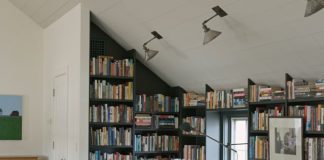
Care homes provide around-the-clock care for older adults who are unable to live independently. Nursing and nursing assistants in the care home help residents with activities of daily living (ADLs), such as washing, eating, dressing, and going to the toilet.
Doctors and nurses will prescribe and administer medications when needed. Some care homes will also take their residents on regular day trips and social activities.
For any elderly person and their lives with ones, moving into a care home can be an intimidating and stressful experience. It’s a huge change for everyone involved that takes a while for people to come to terms with.
To provide the best care possible for its residents, a care home must be fully equipped with the best tools and equipment. By law, a care home must have general and specialized equipment that reflects the needs of its residents, including equipment that makes daily living easier, safer, and more comfortable for the residents.
The necessary equipment for care homes includes equipment for accessibility and safety, moving and handling, mobility, and lifting. Additional tools might include personal safety alarms and ergonomic tools.
Let’s talk through each of the essential pieces of equipment in more detail. Here are the most important items that every care home needs.
Accessibility and Safety Equipment
The safety of the residents is a top priority for care homes and nursing homes. Older adults often need additional aids and tools to help them move around and stay safe.
There is a wide range of modifications and adaptations that can make things easier and safer for the residents of the care home. In some areas, a formal assessment is required by the local governing body to determine whether any large adaptations are safe before they can be put into place.
Some common adaptations and modifications include:
- The best walk-in tubs and showers with handrails to hold onto
- Stairlifts or elevators to make going upstairs easier and safer
- Extra banisters on the stairs for residents to grab onto when walking up the stairs
- Handrails in corridors and around the edges of rooms for residents to grab if they feel unbalanced
- Widened doorways to make accessibility easier for those with walking frames or wheelchairs
- Lower desks and tabletops to prevent residents from needing to reach up too far
- Indoor and outdoor ramps to reduce the number of steps that residents have to navigate and to make it easier for those using walking aids and wheelchairs
- Outdoor and indoor motion sensor lighting
Mobility and Walking Equipment
Many older adults have limited movement and mobility. As a result, they often require additional tools and equipment to help them move around. A wide range of mobility aids can be found in every care home, including:
- Walking sticks
- Walking frames
- Wheelchairs
- Mobility scooters
It’s important for care homes to have different versions of each of these mobility aids to cater to the individual needs of their residents. In some cases, the help of a physiotherapist or occupational therapist might be required to determine these needs.
There should be walking sticks of all sizes, with some that can stand up by themselves and options for both right-handed and left-handed people. If there are stairs in the residential home, then there must be walking sticks that are appropriate for going up steps.
Walking frames should be appropriate for both indoor and outdoor use, and they should always be adjusted to the right height for the user. Some walking frames are also available with a seat or basket attachment.
For disabled residents or those who struggle to walk, wheelchairs must be available in any care home. You can get both manual and electric wheelchairs so that residents have maximum comfort and can move around as freely as possible.
Manual wheelchairs are appropriate for residents who are strong enough to push themselves around or have a 24/7 carer who can push the wheelchair around for them. Electric wheelchairs are more appropriate for those who are unable to push themselves around but still want to maintain their independence.
It’s important that care homes have high-quality wheelchairs that are appropriate for both indoor and outdoor use. Every wheelchair should be checked regularly to ensure it is still fully functional and safe to use, especially if it is electrical.
Mobility scooters are fairly similar to wheelchairs in that they provide a mode of transport for individuals who are unable to walk very far by themselves. Mobility scooters are easy to operate and provide residents with much more freedom to go outdoors and travel long distances.
Moving, Handling, and Lifting Equipment
There are several different kinds of equipment that is designed to make movement and lifting easier for older adults. This equipment can be used to help an elderly person move from a chair to a bed or to lift somebody off the ground if they have fallen over.
For care home staff to perform manual handling, they must undergo training. Compared to many other care home tools, moving and handling equipment carries an increased safety risk as the person is being lifted off the ground.
Common moving, handling, and lifting tools include:
- Hoists that use an arm and sling mechanism to lift a person from a chair into a bed or vice versa. They can also be used to lift somebody off the ground if they have fallen over.
- Banana boards, which are used to transfer a person from one surface to another, such as from one bed to another.
- Inflating cushions that can be used to assist the individual back into a seated position when they have fallen over.
- Lift chairs that can help to bring a person back to an upright position.
- Step ladder lifts, which helps individual manoeuvre stairs by supporting them with every step. They can slide into a chair and be transferred to their room or destination.






































